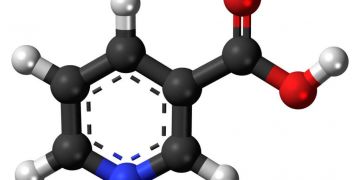What is Nicotine
Nicotine is a potent alkaloid found in the family of plants known as Nightshade (Solanaceae). In small doses – around 1 to 2 mg – it acts as a stimulant in mammals. In larger doses it acts as a sedative and pain killer.
Effects on the Body
Stimulant
Nicotine has several different actions in the body that can produce the effects mentioned previously. Shortly after exposure to nicotine, the adrenal glands are stimulated resulting in a discharge of adrenaline. (7) This causes a sudden release of glucose from the liver and creates the stimulant effect that users note. (2) A few seconds after nicotine is ingested, the nicotine-rich blood passes from the lungs to the brain and there is a release of numerous neurotransmitters. The most well-studied of these is serotonin, norepinephrine and dopamine. In addition to the increase in the release of these chemicals, nicotine also appeared to increase the metabolism of the chemicals. These increases continue for about 2 ½ hours before declining again. (8)
Enhances concentration and memory and reduces appetite
It is the release and increased metabolism of these chemicals that produce many of the effects of nicotine in the body. The presence of dopamine is generally associated with our brain’s pleasure or reward mechanisms. While the most studied actions of serotonin involve the GI tract, its role in the central nervous system is thought to be a contribution to feelings of well-being and happiness. Serotonin also has roles in the regulation of appetite, sleep, as well as cognitive functions including memory and learning. Norepinephrine is the neurotransmitter most responsible for the body’s ability to concentrate. It also affects the area of the brain where attention is controlled. In concert with epinephrine, norepinephrine underlies the ‘fight-or-flight’ response by directly increasing heart rate, triggering the release of glucose from energy stores, and increasing blood flow to muscles throughout the body.
Therapeutic Uses
While the main therapeutic use for nicotine is the treatment of nicotine dependence, there are a few other medical uses. When nicotine is used as a component of tobacco, it has been shown to reduce the risk of ulcerative colitis (3) and preeclampsia (4) possibly related to nicotine’s role as a vaso-constrictive agent. While the use of tobacco increases the risk of Alzheimer’s disease, there is also some evidence that nicotine – separate from tobacco use – can treat Alzheimer’s disease (5) and delay the onset of Parkinson’s disease (6).
How to Use Nicotine
There are many different routes for ingesting nicotine. The most common is smoking – as in smoking tobacco, however there are obviously many health warnings associated with smoking cigarettes. The vaporized nicotine found in electronic cigarettes is becoming increasingly popular. Nicotine can also be chewed, as it is in tobacco gum or chewing tobacco; directly inhaled with a nicotine inhaler; absorbed through the skin, such as a nicotine patch; or through the cheek lining.





